Plans and Pricing
How to create custom pricing plans for your API.
This content is obsoleteSee Hub Listing - Monetize Tab for the latest content.
You have the full freedom to decide your API pricing and what pricing plans are available. All APIs on RapidAPI fall into one of four categories.
| API Type | Description |
|---|---|
| Free APIs | APIs that do not require a credit card or subscription to consume. |
| Pay Per Use | APIs that don't have a subscription fee associated with them. A credit card is required as you pay for what you use on the API. |
| Freemium APIs | Paid APIs that also include a limited free tier. These require a credit card, even for the free plan. |
| Paid APIs | APIs that require a paid subscription plan and credit card to consume. |
Free APIsFree APIs do not require a developer to subscribe to your API on RapidAPI in order to use it. There are no quotas and you can not collect payments through RapidAPI for the consumption of a free API.
Creating pricing attributes
Start by creating pricing attributes for your API. You can add billing objects or features to your plan.
Objects
You can add a new billing object by clicking the +Add New Object button. You must associate an endpoint with the object.
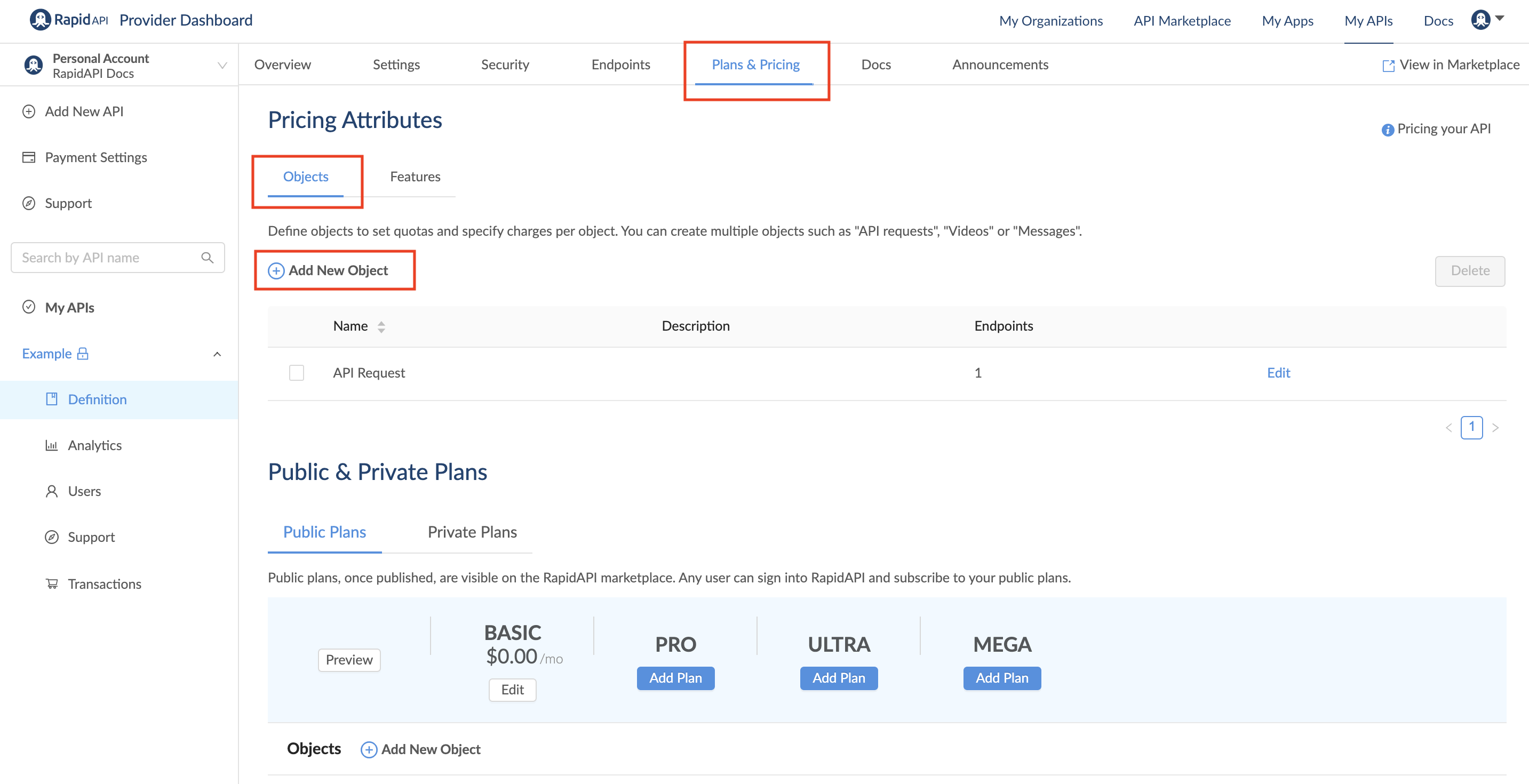
Features
You can add a new feature by clicking the +Add New Feature button. Features can be added to plans to distinguish the difference between the plans and to incentivize plan upgrades.
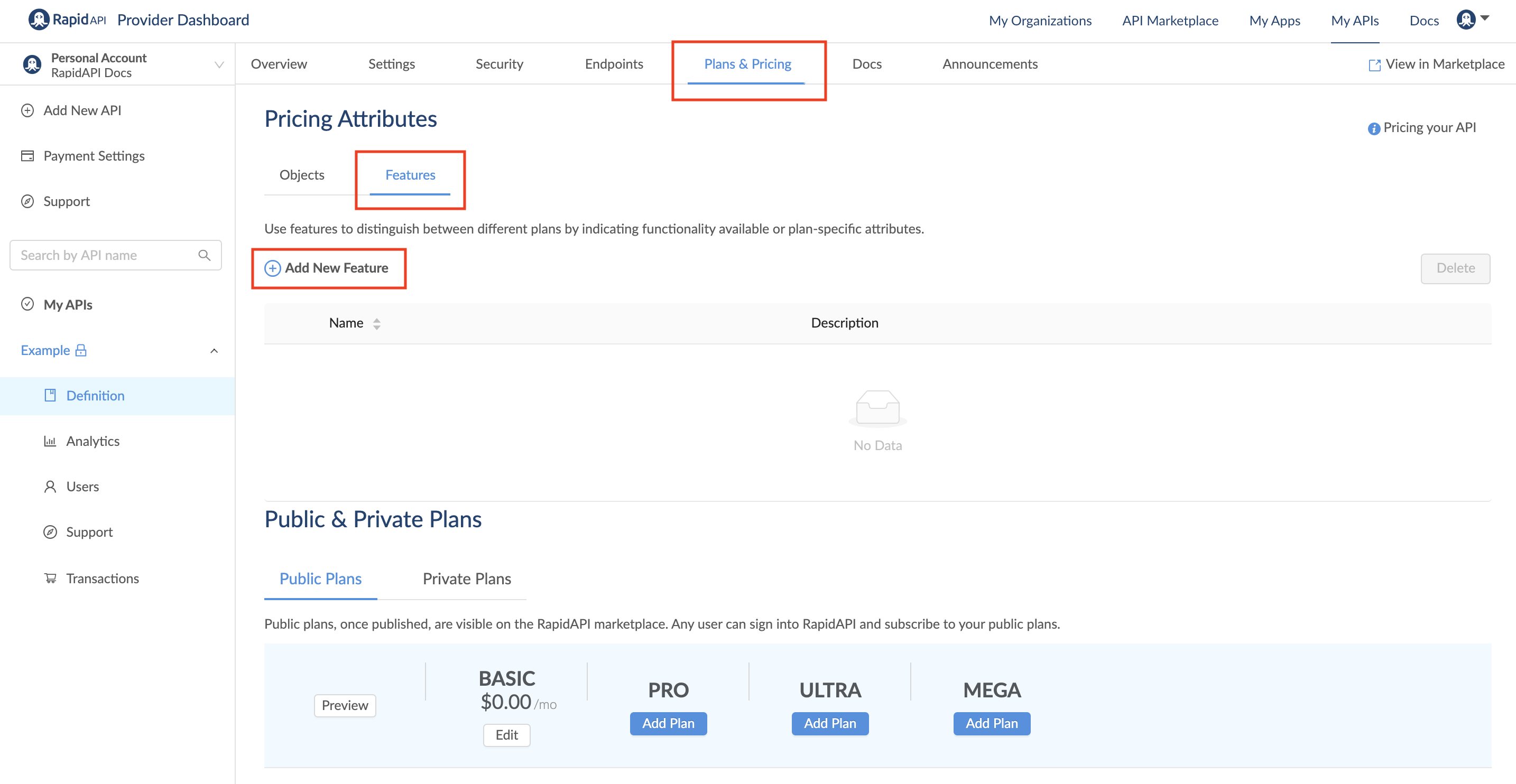
Creating pricing plans
Our pricing recommendationWe generally recommend using all four of the available pricing tiers. Having a free pricing plan (with a small number of requests available) is vital to a good experience for a developer using your API. With a free plan, the developer is able to make a few test requests and guarantee the API functions as expected.
Then for the PRO, ULTRA, and MEGA plans, we recommend having a good distribution of pricing. Each API is different based on API operating costs, but in general, we have seen the following work well:
BASIC - Free with a Hard Limit in place
PRO - $25
ULTRA - $75
MEGA - $150
You can have up to four different pricing tiers. To add a plan to a tier, click the Add Plan
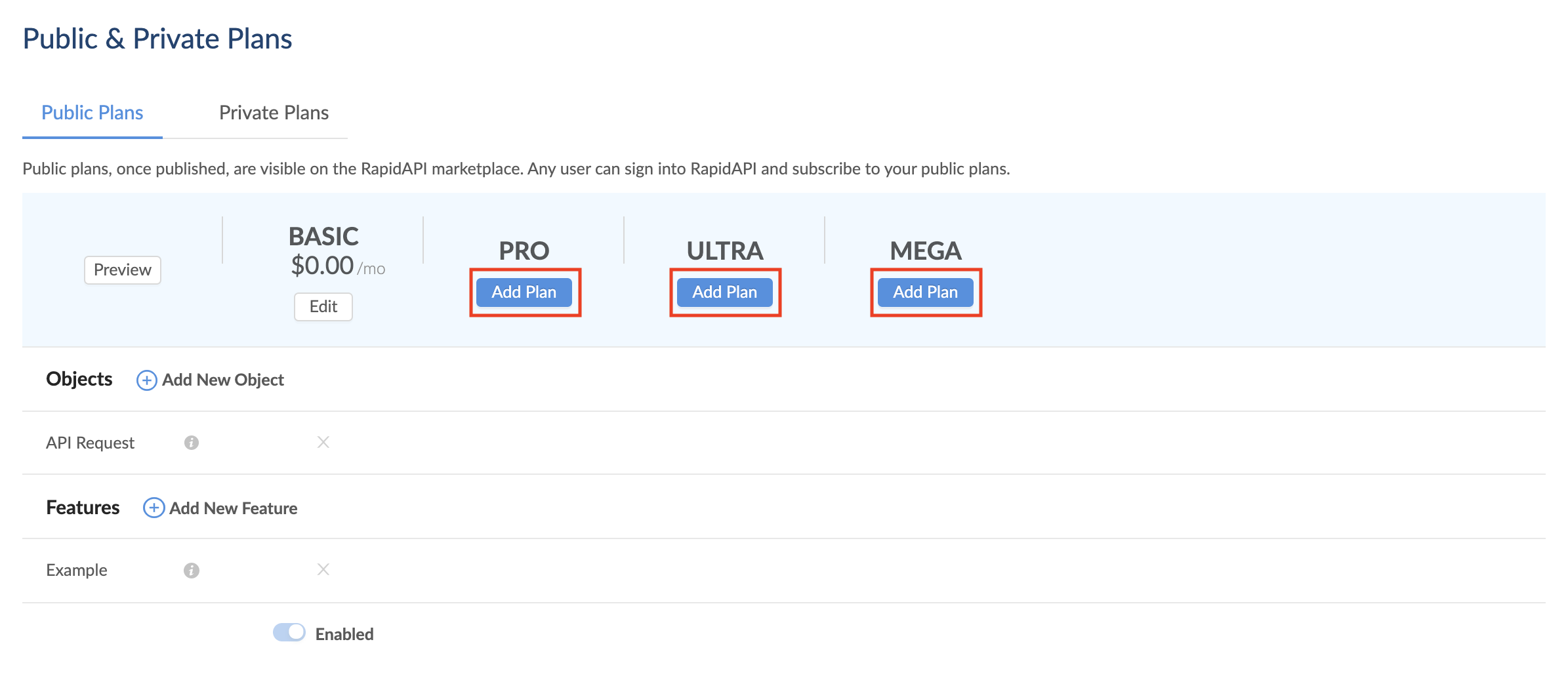
You will then be directed to this screen, where you can set the type, price, rate limit, and base URL for the plan.
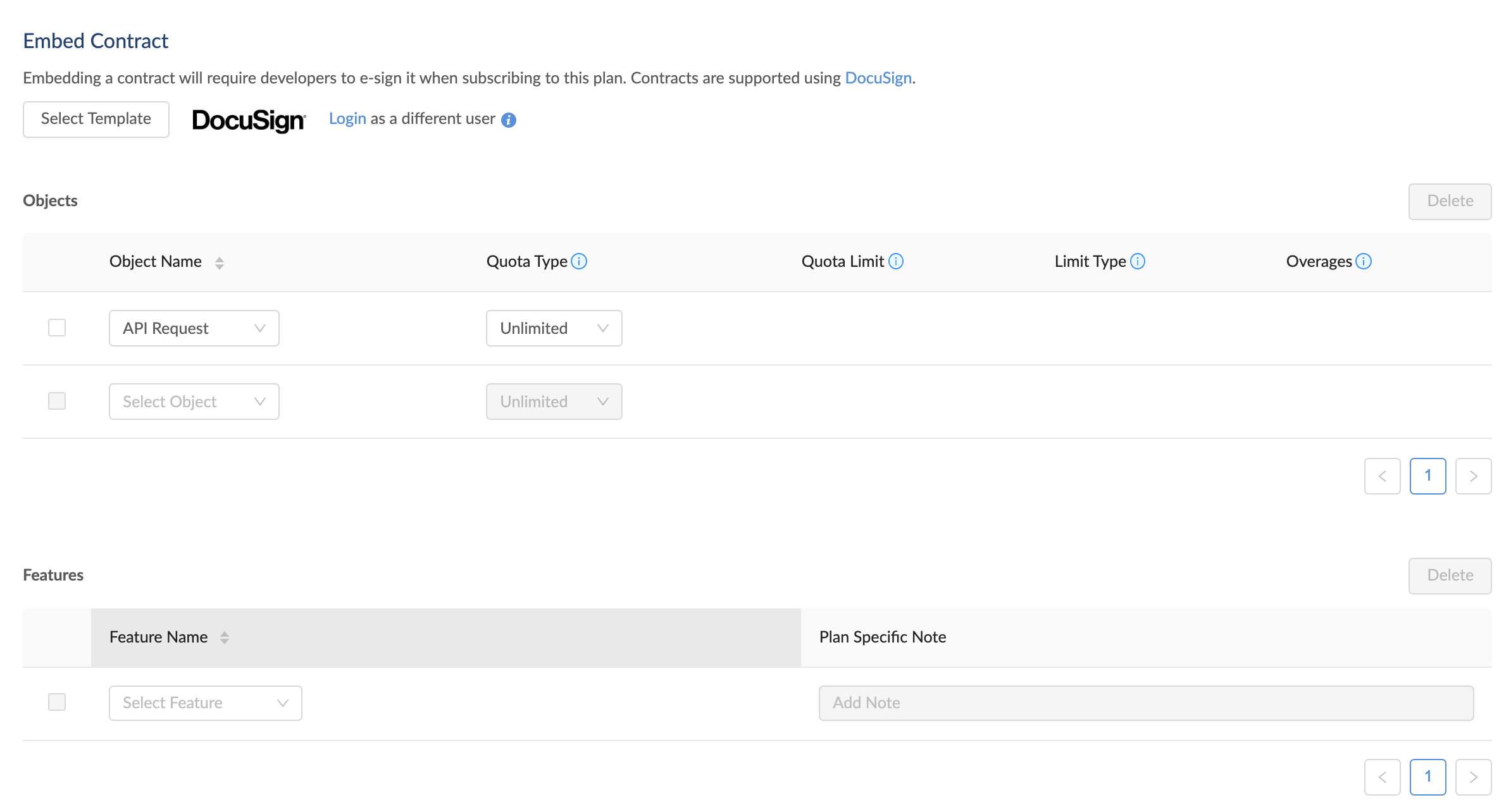
You will notice that your plans will be priced by a monthly or daily quota. If a developer goes over the monthly quota, they will incur an overage fee for each call that exceeds the quota. RapidAPI alerts developers when they approach 85% of their quota limit and when they reach 100% of their quota limit. For most APIs, we don't recommend an overage fee higher than $1 unless your operating cost of making the call is above $1.
Overages and forgivnessOccasionally, a developer will have a bug in their code that causes large accidental overages. RapidAPI can not forgive an overage without explicit permission from the API Provider. To read more about payouts and forgiveness, see our Payouts and Finance section
Hard limits
To prevent developers from making any overages, you can set a hard limit. If a hard limit is in place, developers will be capped at the quota limit and will be blocked from making more calls once the limit is reached. Set a hard limit by selecting "hard limit" from the limit type dropdown.

Customizing pricing tiers
You can customize which objects and features are associated with each pricing tier. This gives you the ability to set API request limits, as well as specify other features that are available with each plan. See the plan below for an example.
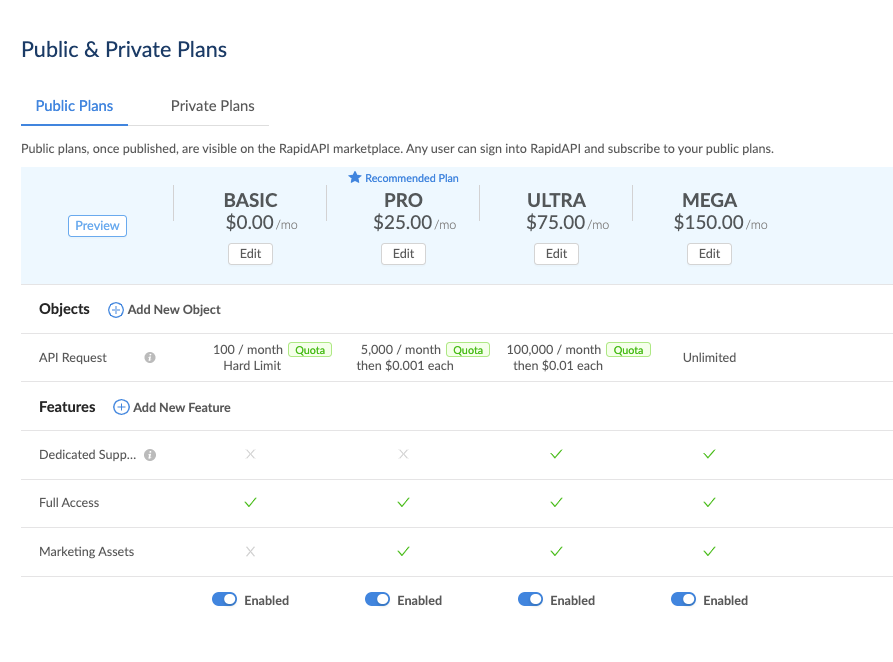
Custom quotasLearn more about creating custom quotas on our Custom Quotas doc
Changing a pricing plan
You can disable or change a pricing plan at any time. Disabling a plan hides it from the RapidAPI Hub so no new developers can subscribe to this plan. Developers that were subscribed to the plan before it was disabled will remain subscribed to the original plan.
If you modify an existing plan, the changes will also display on the RapidAPI Hub immediately. New developers will only see the modified version of the plan and can subscribe to it. Developers that were subscribed to the previous version of the plan will remain subscribed to the previous version of the plan.
Updated 7 months ago
